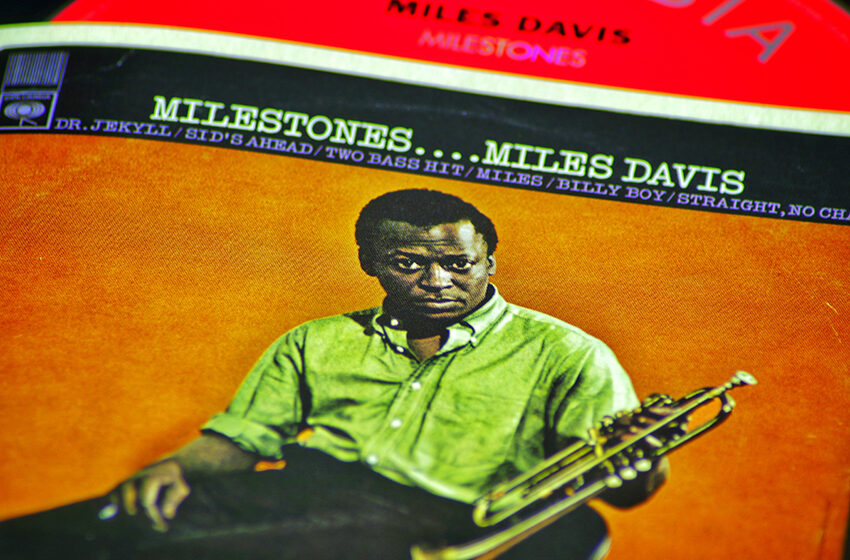Jazz and Leadership

Rome, Italy – April 25, 2021, cover of the Milestones album by American jazz trumpeter and composer Miles Davis and his sextet, first and only studio recording of the sextet.; Shutterstock ID 2010283364; purchase_order: -; job: -; client: -; other: –
Possibly never before has jazz acted as proper a metaphor of what is required of our companies and those that lead them; I was advised of that just recently watching Mulgrew Miller and also Wingspan perform at allure Criterion in Manhattan. The “jamming” was great, each artist succeeded at what he did best, set participants were plainly influenced as well as entirely engaged, therefore were we. Today companies, as well as their leaders, are also called upon to “jam” or innovate around a major theme – their mission and objectives, they need to unite the right “artists” and call out their ideal – mixing private flexibility with collective objective, as well as deliver an “efficiency” that keeps consumers involved.
What can we gain from jazz as leaders and companies?
Interest: New York is honoured with an abundance of jazz musicians – some at clubs like the Jazz Standard, some in Central Park, and also lots of merely performing at road edges. Something they all seem to share is a love for jazz; they play jazz since it’s what they like to do; one gets the impression that paid or not, they’re going to play; it’s who they are. George Carlin explained jazz musicians as “the only employees I can think about that agree to put in a full shift for pay and afterwards go elsewhere and also continue to help complimentary.” As John Lewis, jazz pianist as well as musical director of the Modern Jazz Quartet put it: “The reward for playing jazz is playing jazz.”
Variety: Mulgrew and also Wingspan set participants covered the age range, dressed in different ways, played various instruments and also played differently. Each was independent as well as had his own distinctive design, but all were there for a usual objective; like the most reliable leaders and also organizations, they managed unity with diversity. As Margaret Fuller, an early equal rights advocate put it: “Consistency exists indifference no less than in likeness, so the very same keynote governs both components.” In his publication Jamming, * John Kao informs a wonderful story about exactly how a currently diverse team secured by Thelonius Monk and Kenny Clarke welcomed a young saxophonist to sit in who “played things they never heard before;” that was Charlie Parker, one of the all-time jazz greats whose design brought to life the “bebop” activity.
” Loose as well as limited” Jazz ensembles have leaders, and also often they lead off with the primary melody. Jazz leaders do not direct like timeless band conductors, though; it seems a lot more like an invitation or a drawing approach than a pressing kind of instructions. Normally they bring the main tune or beat and there are basic assumptions around who plays when and for the length of time, yet there is a great deal of flexibility around what exactly members play and exactly how far “out there” or “off manuscript” they go. Jazz for me exemplifies the very best kind of “alignment,” and what Jim Collins ** defines as strictness around “core ideology” combined with “flexible devices.”
Development: It’s normally when you can inform that a person musician has strayed rather much from where he’s been before that points obtain interesting – as well as more innovative, and much more enjoyable. That’s what draws one of the most praise, as well as it’s enjoyable to see the real recognition of those efforts by fellow ensemble members. “Errors” don’t actually appear like mistakes in good jazz as much as initiatives to create something that really did not exist before. Pay Attention to Miles Davis who claimed: “Do not fear mistakes; there are none,” or in Ornette Coleman’s words: “It was when I discovered I might make mistakes that I knew I was on to something.” Obviously, the kind of mistakes that Ornette or Miles spoke about is various than blunders that I or anybody trying jazz that had not yet “paid his charges” would certainly make. Charlie Parker put it best when he claimed: “You’ve got to discover your instrument. Then, you practice, method, method. And then, when you lastly stand up there on the gazebo, neglect all that and also just sob.”
Trust and also synergy: What a wonder to observe exactly how a skilled ensemble picks up anywhere one of those speculative riffs heads and also weaves it back right into the main melody or beat. Part of what makes that feasible is the depend on that you can practically feel – trust that originates from confidence in each other’s capabilities, and in a lot of cases from much experience with each other. Oscar Peterson, an additional jazz great, put it this way: “It’s the team audio that is very important, also when you’re playing a solo. You do not just have to recognize your very own instrument, you should understand the others as well as just how to back them up whatsoever times. That’s jazz.”
Link and also interaction: I was close adequate to Mulgrew’s set that I could likewise see just how well they stayed in touch – particularly exactly how very closely Mulgrew got in touch with whoever had the lead for the moment; he maintained the melody while in virtually continuous eye contact with whoever was jamming, virtually anticipating what came next.
Submersing ourselves in any kind of different medium or location than what we are utilized to can result in insights and also various ways of understanding; my immersion in the New York City Jazz Standard experience drove that point residence for me. Do yourself a favour; go to the Dakota Jazz Club in Minneapolis, or a jazz club somewhere else to see what I suggest